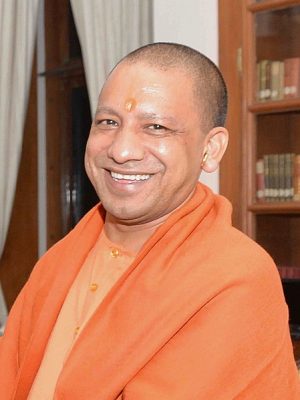As the second wave of the pandemic recedes in India, politics has smoothly moved from backdoor plotting to increasingly open conflict. As many knives are being drawn within party camps as between them.
Both the ruling Bharatiya Janata Party (BJP) and the opposition Congress are in the midst of fighting rebellion in their state units. Such political infighting not only makes for good political drama but also provides valuable insights into the state of India’s two main parties.
The timing of these tussles can be partly explained by the pandemic, which has left few chief ministers untarnished in its wake. This has provided the perfect opportunity for their rivals within the party to train their guns and extract their pound of flesh. If in the southern state of Karnataka, BJP legislators and ministers are openly attacking Chief Minister Yediyurappa, in the western state of Gujarat, the faction led by the president of the BJP’s state unit has consolidated its control over the party at the expense of Chief Minister Vijay Rupani.
The BJP’s biggest headache is in the heartland state of Uttar Pradesh. Its chief minister, Yogi Adityanath, has been sharply criticized by his own legislators, over his autocratic governance and the mismanagement of the pandemic. The last two weeks saw top leaders of the BJP and the Rashtriya Swayamsevak Sangh (RSS), the ideological fount of the BJP, frenetically shuttling between Delhi and Lucknow, the state capital, trying to set the house in order. Uttar Pradesh will vote in state assembly elections early next year.
The Congress can draw little satisfaction from the show of disaffection in the ranks of the BJP, as its own internal tussles are, if anything, much more serious and in the public glare. The long-running feud between Punjab Chief Minister Amarinder Singh and former cricketer-turned-politician Navjot Sidhu came to a head earlier this month. Both, the chief minister and his opponents descended on Delhi to present their case before a three-member Central Committee of the Congress party that was hastily set up to hammer out a compromise.
Meanwhile, in Rajasthan, the young dissident Sachin Pilot has threatened a reprise of his open revolt last year against Chief Minister Ashok Gehlot.
On the surface, the BJP and the Congress appear to suffer from a similar ailment. However, the nature of their intra-party challenges are remarkably different.
For the BJP, the genesis of the party skirmishes lies in a strong High Command and weak state units. Over the last seven years, the party organization has been transformed from a relatively collegial structure to a virtual two-man show. The ruling duo – Prime Minister Narendra Modi and Home Minister Amit Shah – have repeatedly demonstrated that they can give the marching orders to BJP chief ministers at any given moment, as the former chief ministers of Gujarat and Uttarakhand can ruefully attest.
Further, Modi and Shah believe in micromanaging state affairs, with even cabinet reshuffles in BJP-ruled states being directed from Delhi. This leaves the chief ministers weak and at the mercy of the high command. Conversely, it strengthens rebels, who draw their power directly from the high command. While this party structure encourages palace intrigues, it also makes them easier to resolve, as party discipline can be forcefully imposed from the top.
In contrast, the troubles in the state units of the Congress are due to a weak central authority and relatively strong state units. The Congress chief ministers of Punjab, Chhattisgarh and Rajasthan have entrenched their power in their respective states, and are resistant to any compromises imposed on them from Delhi.
The reason the Congress party has failed to resolve the recurring intra-party feud in Rajasthan is because the center is no longer a powerful arbitrator. The Gandhi dynasty is at its lowest point politically, and so its promises to rebels and directions to chief minsters do not carry the weight they once did. Also, since the party has been out of power, it no longer has the traditional option of accommodating state rebels in central ministries.
There is also a striking difference between the mechanisms the two parties have employed to deal with their internal dissidence, as journalist Sunetra Chaudhary pointed out in the Hindustan Times. The BJP sent out emissaries to state capitals to gauge the mood of the party units and settle differences, whereas the Congress held court in Delhi. The latter was akin to the court of a Mughal emperor, commanding the ornamental deference of regional satraps but wielding little real power over them.
The BJP, on the other hand, increasingly resembles the Congress of Indira Gandhi, more of a top-down bureaucracy rather than a political party, where all power flows from the personal authority of Modi. However, the BJP would do well to remember that the seeds of the Congress’ eventual decline were sown during the rule of the all-powerful Indira Gandhi.

































